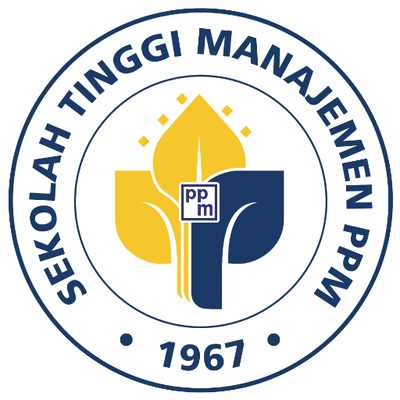Analisis Bibliometrik: Kompetensi Individu Kepemimpinan Transformasional
Abstract
Keywords
Full Text:
PDF (Bahasa Indonesia)References
Alosani, M. S., Al-Dhaafri, H. S., & Awadh Abdulla, A. (2021). Investigating the role of HRM practices on service innovation: Empirical evidence from UAE government agencies. Management Research Review, 44(1), 1–24. https://doi.org/10.1108/MRR-03-2020-0141
Álvarez, O., Castillo, I., Molina-García, V., & Balague, G. (2016). Transformational leadership on the athletic field: An international review. Journal of Sport Psychology, 25(2), 319–326. https://www.redalyc.org/pdf/2351/235146515013.pdf
Bass, B. M., & Riggio, R. E. (2006). Transformational leadership. Mahwah, NJ: Erlbaum. http://dx.doi.org/10.4324/9781410617095
Batistic, S., Cerne, M., and Vogel, B. (2017). Just how multi-level is leadership research? A document co-citation analysis 1980–2013 on leadership constructs and outcomes. Leadership Quartely, 28(1), 86–103. https://doi.org/10.1016/j.leaqua.2016.10.007
Braun, S., Peus, C., Weisweiler, S., & Frey, D. (2013). Transformational leadership, job satisfaction, and team performance: A multilevel mediation model of trust. Leadership Quarterly, 24(1), 270–283. https://doi.org/10.1016/j.leaqua.2012.11.006
Chen, Y. S., & Chang, C. H. (2013). The determinants of green product development performance: green dynamic capabilities, green transformational leadership, and green creativity. Journal of Business Ethics, 116(1), 107–119. https://doi.org/10.1007/s10551-012-1452-x
Dvir, T., Eden, D., Avolio, B. J., & Shamir, B. (2002). Impact of transformational leadership on follower development and performance: A field experiment. The Academy of Management Journal, 45(4), 735-744. https://doi.org/10.2307/3069307
Fahimnia, B., Sarkis, J., & Davarzani, H. (2015). Green supply chain management: A review and bibliometric analysis. International Journal of Production Economics (Vol. 162, pp. 101–114). Elsevier B.V. https://doi.org/10.1016/j.ijpe.2015.01.003
García-Morales, V. J., Jiménez-Barrionuevo, M. M., & Gutiérrez-Gutiérrez, L. (2012). Transformational leadership influence on organizational performance through organizational learning and innovation. Journal of Business Research, 65(7), 1040–1050. https://doi.org/10.1016/j.jbusres.2011.03.005
Garza-Reyes, J. A. (2015). Lean and green-a systematic review of the state of the art literature. Journal of Cleaner Production, 102, 18–29. https://doi.org/10.1016/j.jclepro.2015.04.064
Hitt, M.A., Miller C.C., Colella A., and Triana, M. (2017). Introduction to organizational behavior. 5th Edition. E-Wiley.
Hoch, J. E., Bommer, W. H., Dulebohn, J. H., & Wu, D. (2018). Do ethical, authentic, and servant leadership explain variance above and beyond transformational leadership? a meta-analysis. Journal of Management, 44(2), 501–529. https://doi.org/10.1177/0149206316665461
Howell, J. M., & Avolio, B. J. (1993). Transformational leadership, transactional leadership, locus of control, and support for innovation: Key predictors of consolidated-business-unit performance. Journal of Applied Psychology, 78(6), 891–902. https://doi.org/10.1037/0021-9010.78.6.891
Jung, D. I., & Sosik, J. J. (2002). Transformational leadership in work groups: the role of empowerment, cohesiveness, and collective-efficacy on perceived group performance. Small Group Research, 3(3), 313-336. https://doi.org/10.1177/1049640203300300
Schaubroeck, J., Lam, S. S. K., & Cha, S. E. (2007). Embracing transformational leadership: team values and the impact of leader behavior on team performance. Journal of Applied Psychology, 92(4), 1020–1030. https://doi.org/10.1037/0021-9010.92.4.1020
Shamir, B., House, R. J., & Arthur, M. B. (1993). The motivational effects of charismatic leadership: A self-concept based theory. Organization Science, 4(4), 577–594. https://doi.org/10.1287/orsc.4.4.577
Singh, S. K., Giudice, M. Del, Chierici, R., & Graziano, D. (2020). Green innovation and environmental performance: The role of green transformational leadership and green human resource management. Technological Forecasting and Social Change, 150. https://doi.org/10.1016/j.techfore.2019.119762
Tal, D., & Gordon, A. (2016). Leadership of the present, current theories of multiple involvements: A bibliometric analysis. Scientometrics, 107(1), 259–269. https://doi.org/10.1007/s11192-016-1880-y
van Eck, N.J. and Waltman, L. (2010). Software survei: VOSviewer, a computer program for bibliometric mapping. Scientometrics, Vol. 84, No. 2, pp.523–538 [online] https://doi.org/ 10.1007/s11192-009-0146-3
Walumbwa, F. O., & Avolio, B. J. (2008). How transformational leadership weaves its influence on individual job performance: The role of identification and efficacy beliefs. Personnel Psychology, 61(4), 793-825. https://doi.org/10.1111/j.1744-6570.2008.00131.x
Wang, G., Oh, I. S., Courtright, S. H., & Colbert, A. E. (2011). Transformational leadership and performance across criteria and levels: a meta-analytic review of 25 years of research. In Group and Organization Management (Vol. 36, Issue 2, pp. 223–270). https://doi.org/10.1177/1059601111401017
Wang, H. J., Demerouti, E., & Le Blanc, P. (2017). Transformational leadership, adaptability, and job crafting: The moderating role of organizational identification. Journal of Vocational Behavior, 100, 185–195. https://doi.org/10.1016/j.jvb.2017.03.009
Wang, H., Law, K. S., Kong, H., Hackett, R. D., Wang, D., & Chen, Z. X. (2005). Leader–member exchange as a mediator of the relationship between transformational leadership and followers’ performance and organizational citizenship behavior. Academy of Management Journal, 48(3), 420-433. https://www.jstor.org/stable/20159668
DOI: https://doi.org/10.34149/jmbr.v20i3.593
Indexing
JMBR Editorial Office: PPM School of Management, Jl. Menteng Raya 9-19 Jakarta 10340 Phone: 021-2300313 ext 2354

License
JMBR is using CC BY License
This work is licensed under a Creative Commons Attribution 4.0 International License.


















